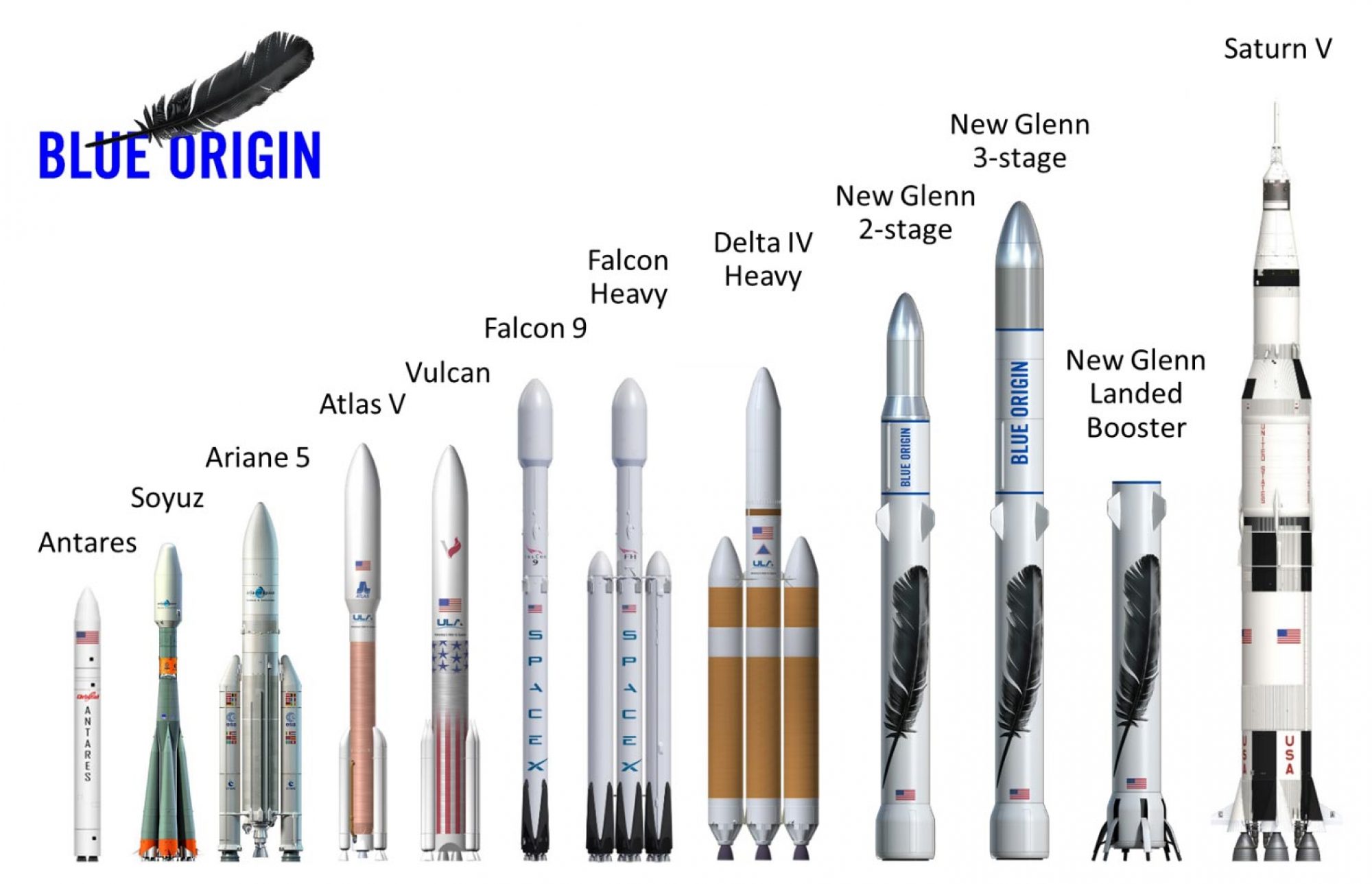Blue Origin Previews New Glenn
Today, Jeff Bezos gave us a nice preview of their next launch vehicle: New Glenn.

In addition to the rendering above, we got a nice rundown of the vehicles:
Named in honor of John Glenn, the first American to orbit Earth, New Glenn is 23 feet in diameter and lifts off with 3.85 million pounds of thrust from seven BE-4 engines. Burning liquefied natural gas and liquid oxygen, these are the same BE-4 engines that will power United Launch Alliance’s new Vulcan rocket.
The 2-stage New Glenn is 270 feet tall, and its second stage is powered by a single vacuum-optimized BE-4 engine. The 3-stage New Glenn is 313 feet tall. A single vacuum-optimized BE-3 engine, burning liquid hydrogen and liquid oxygen, powers its third stage. The booster and the second stage are identical in both variants.
We plan to fly New Glenn for the first time before the end of this decade from historic Launch Complex 36 at Cape Canaveral, Florida. New Glenn is designed to launch commercial satellites and to fly humans into space. The 3-stage variant – with its high specific impulse hydrogen upper stage – is capable of flying demanding beyond-LEO missions.
This is a big rocket—7-meter core and second stages, 7 BE-4 engines, and a single vacuum BE-4 on the second stage. Interesting how they’re planning 2- and 3-stage variants. My guess would be the 3-stage version is for commercial flights to geostationary (and exploration flights beyond), probably even with direct insertion capability for GEO.
I can’t wait to hear the official payload numbers on this thing, but by looking at the class of rockets it sits in and the thrust…this is going to be huge.
Falcon Heavy may only capture the active heavy lift title for a few years, if New Glenn is flying by 2020. And with Falcon Heavy’s biggest drawback being those small fairings (notably why Bigelow can’t launch a BA-330 with SpaceX), the 5- and 7-meter fairings of the 2- and 3-stage New Glenn provide a nice competitive advantage.
Our vision is millions of people living and working in space, and New Glenn is a very important step. It won’t be the last of course. Up next on our drawing board: New Armstrong. But that’s a story for the future.
Shepard, suborbital. Glenn, orbital. Armstrong, lunar surface.
 Main Engine Cut Off
Main Engine Cut Off